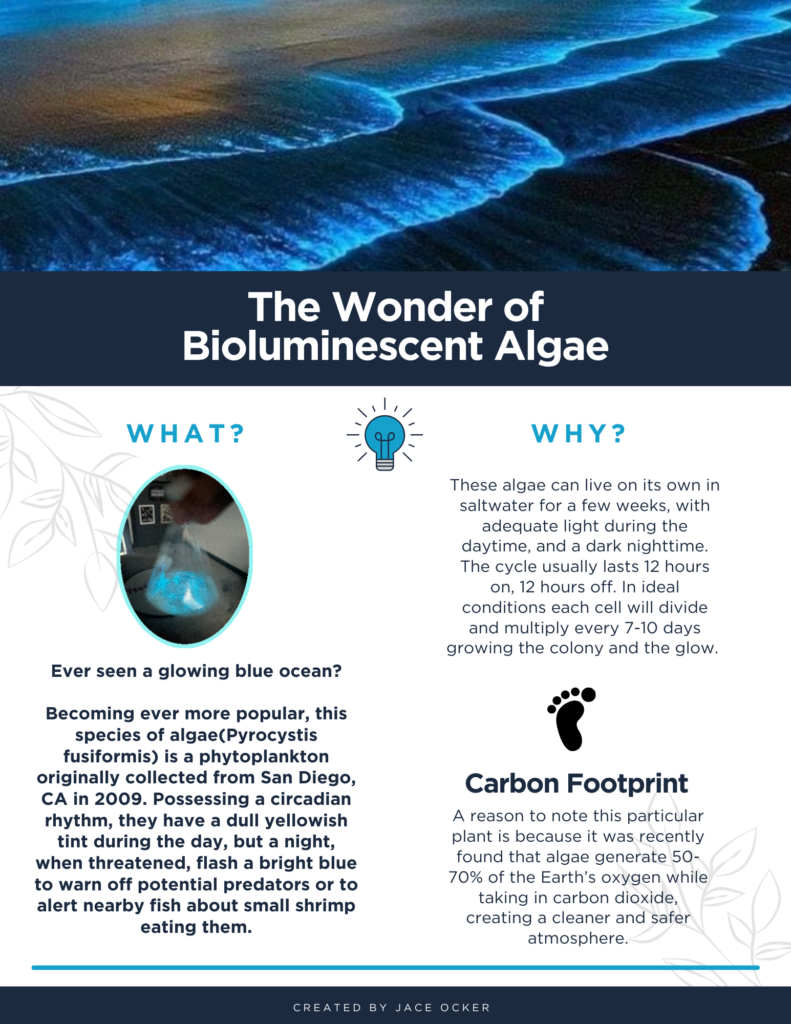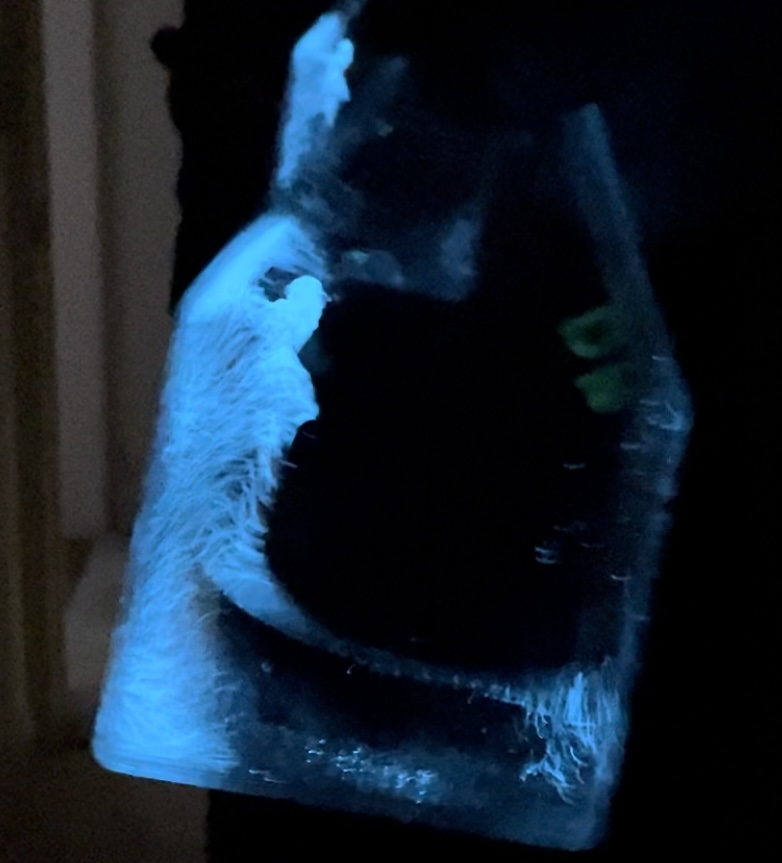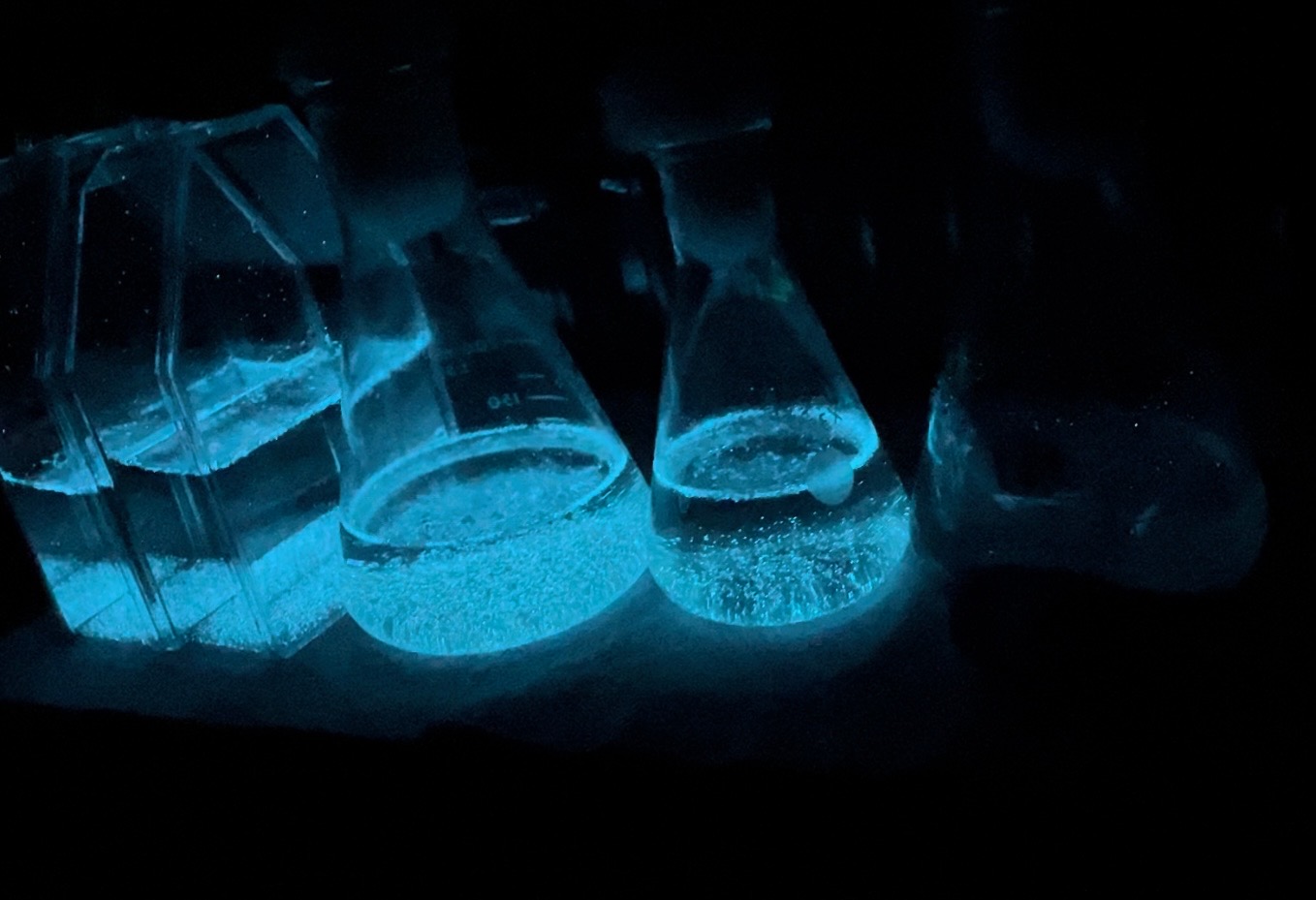Neat stuff! Glowing and twinkling algae…
There exists a category of algae known as microalgae. They are often single-celled, greenish, and grow in fresh and saltwater. Worldwide, microalgae are estimated to provide us with 50-70% of the oxygen we breathe! In doing so, they remove significant amounts of the greenhouse gas carbon dioxide during their photosynthesis, naturally combatting climate change! Under ideal conditions, each cell divides into two identical twin cells every 7-10 days, indefinitely!
They are also sometimes referred to as phytoplankton, which translates as “plant drifter.” They form the base of the food chain in the oceans, and without them, the larger animals in and around our oceans would have no food chain to sustain themselves and would starve.
In 2023 I began working with a special microalgae species that is bioluminescent. This translates as “living light”: an example of a living species creating its own light by an internal chemical reaction.
Why would these algae evolve to flash?
These microalgae will flash a bright blue light at night when the cell walls are nudged or moved. The flash is a “burglar alarm” when small shrimp (Zooplankton) try to eat them in the ocean. The flash alerts the “police” = nearby fish, who then come and eat the small shrimp, saving the rest of the colony of algae cells! Like humans, they possess a circadian rhythm, and have a sense of day and night. They will only flash during their night cycle.
I am experimenting with cultivating samples of the bioluminescent species Pyrocystis fusiformis = “fire-cyst” “spindle (football) – shaped.” It is non-toxic and lives in saltwater. In the fall 2023 academic semester, each of my students enjoyed observing and experimenting with these algae as a take-home project spanning about 8 weeks. Enjoy the images, and stop back when I show you some of the special effects experiments I am working on!



